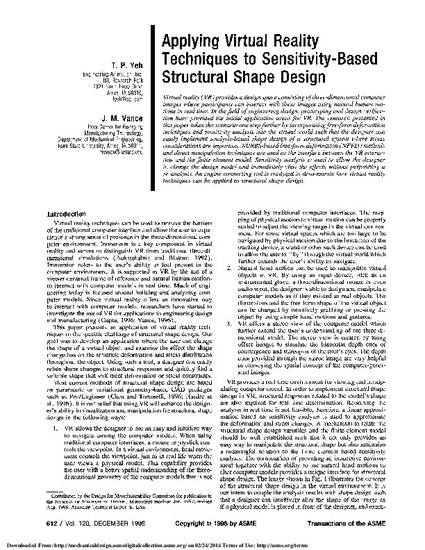
Virtual reality (VR) provides a design space consisting of three-dimensional computer images where participants can interact with these images using natural human motions in real time. In the field of engineering design, prototyping and design verification have provided the initial application areas for VR. The research presented in this paper takes the scenario one step further by incorporating free-form deformation techniques and sensitivity analysis into the virtual world such that the designer can easily implement analysis-based shape design of a structural system where stress considerations are important. NURBS-based free-form deformation (NFFD) methods and direct manipulation techniques are used as the interface between the VR interaction and the finite element model. Sensitivity analysis is used to allow the designer to change the design model and immediately view the effects without performing a re-analysis. An engine connecting rod is analyzed to demonstrate how virtual reality techniques can be applied to structural shape design.
Available at: http://works.bepress.com/judy_vance/50/

This article is from Journal of Mechanical Design 120 (1998): 612–619, doi:10.1115/1.2829323. Posted with permission.